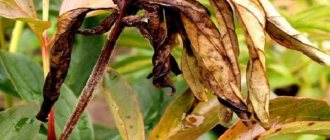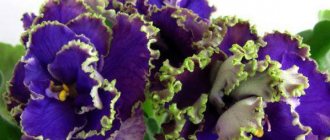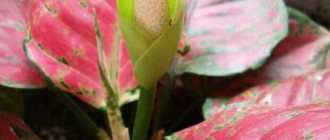Description
The shrub of this indoor violet is decorated with large buds. The center of the flower is painted white. Most of each petal is covered with bright colors: blue, pink, purple. When combined, several shades create an expressive pattern. The texture is semi-double. Experts note that the saturation of shades depends on the temperature conditions in which the violet grows.
The leaf color is standard green. With proper development, a uniform and small rosette is formed. The foliage shape is oblong and rounded. The first flowers appear after 9 months. With proper care, lush flowering is observed. Due to the original color, this variety stands out noticeably from others.
Officially, this variety and other indoor violets belong to the genus of herbaceous plants called Saintpaulia. All its representatives have a beautiful and expressive color.
Also, plants of this type combine growing and care conditions.
Social structure and reproduction
Photo: Pair of peacock butterflies
These butterflies live alone. When the breeding season begins, the males divide the territory among themselves, after which each one waits for the female to appear. When this happens, he begins a mating ritual, which includes flying together with mating dances. Butterflies also spread pheromones around themselves, which make it easier for them to find each other.
As a result, the female is fertilized and lays a hundred or several hundred eggs, almost always on a nettle. They take a week or two before the caterpillars emerge - faster in warm weather and longer in cold weather.
These insects are characterized by complete transformation. The first generation caterpillars appear in May, and the second in mid-summer. At first they remain in the brood, and when they grow up, they crawl away from each other and begin to live separately.
The caterpillars are dark in color and covered with long spines, although in reality they offer little protection from predators, but are designed to at least scare away some of them. The caterpillar really looks quite unapproachable, but predators are already accustomed to this species, although it can really have an effect on young and not particularly hungry ones.
In total, the peacock eye lives in the form of a caterpillar for about a month, and its main activity during this time is feeding. She chews the leaf almost continuously, and grows 20 times, her weight increasing even more. Then it pupates and spends 10-20 days in this form, depending on the weather - as in the case of the transformation from egg to larva, the warmer it is, the faster it passes this form.
The pupa can be attached to tree trunks, fences, walls; depending on the color of their surface, its color can also vary, mimicking its surroundings - it can be from light green to dark brown. The pupa, like the caterpillar, has spines.
When development ends, finally breaking the cocoon, the crown of the butterfly's development, the imago, its adult form, appears. She will need very little time to get used to the wings, after which she will be completely ready to fly.
General rules of care
Plants belonging to the above genus need a sufficient amount of sunny color. A full day of light should be approximately 12-13 hours, but the plant must be protected from direct rays. Evening and morning light can touch the plant, it will not cause any harm.
Compliance with this condition is very important for a beautiful and expressive color.
When the indicator drops to below 15 degrees Celsius, the plant stops growing. In the hot season, the flower feels great in conditions of 24 degrees Celsius above zero. With the onset of cold weather, this indicator can be lowered. Experts strongly recommend not taking the shrub outside when it gets hot.
Indoor violets, like other houseplants, do not tolerate drafts. Also, their condition is significantly affected by sudden changes in temperature. The flower will feel great in a compact pot. These conditions are necessary for the formation of a large number of buds. Small plastic containers are ideal. The size of the container should be 3 times smaller than the plant's rosette.
Features of caring for violets Duchess at home
At home, the flower needs to create suitable conditions. They are made up of several factors.
Temperature
To grow an adult plant, an air temperature of +20 to +23 °C is required. Young violets require more heat; they are recommended to be grown at temperatures from +23 to +26 °C.
Lighting
Violets love light very much, but they do not do well in direct sunlight. The best place for this plant may be a window sill in the eastern part of the house. If there is none, you can equip a part of the window for the flower where there is least light.
Important! The Duchess has a capricious character, which is why many violet growers advise placing a flower pot on a window on the north side of the house. This way the plant will bloom better and retain its beauty longer.
Watering
To water the plants, use settled tap water at room temperature. You need to water the violet in such a way as to avoid the accumulation of water near the shoots and leaves. The soil must be kept moist; it can only dry out by a third, since otherwise the leaves will begin to dry out and fall off.
Spraying
Violets do not like spraying
If the flower does become dusty, you should use water at room temperature and carefully wash off the dust, and then blot everything with a napkin.
Humidity
Under no circumstances should the plant be placed in rooms with high humidity. If moisture gets on the stems and leaves of a delicate flower, it will die. It is better to place it in a place with a rather dry microclimate.
Priming
Due to the complex nature of the plant, you need to choose the soil carefully, otherwise the flower will get sick and even die. Like all indoor plants, violets prefer soft soil in which there is no obstacle to oxygen reaching the roots.
The main features to remember when choosing soil:
- The soil should be chosen saturated with microelements.
- Nothing should have grown in this soil for a year.
- Before planting, you should feed the soil; for this it is better to use phosphorus and potassium. Afterwards you should fertilize regularly.
- An excellent option would be soil from the forest.
Important! Don't forget about drainage in the pot. It can be found in any specialty store
Feeding
It is necessary to feed the violet twice a month throughout the year. After the transplant, a break is taken for 4-6 weeks. You can use mineral fertilizers for flowering plants.
Violets require fertilizing all year round, which is carried out twice a month. A break of 4 to 6 weeks is needed only after the transplant. To feed, you can use a mineral complex that fertilizes flowering plants.
Composition of the earth
The correct substrate, which is sold in the store, is perfect for plants of the Saintpaulia genus. It contains all the necessary elements for the nutrition and development of the bush. In addition, the finished product does not need to be hardened or processed additionally. You can also prepare the mixture yourself, adhering to the following proportions: 0.5 parts turf soil, 2 parts leaf soil, 1 part humus and 1 part sand.
To the above components add a few pinches of bone meal and a spoonful of superphosphate. All elements are thoroughly mixed. The ideal soil for violets should be airy and low in acidity.
When replanting, be sure to line the bottom of the pot with drainage and make several holes.
Watering
The first watering is carried out after transplanting the plant (if you purchased a rooted leaf or baby). Violet does not need constant moisture. It is enough to water the plant from time to time when the top layer of soil dries out. As a rule, the soil is moistened approximately once every 10 days. Warm water is used, which has been pre-settled for several days.
Features of plant care at home
Ficus is unpretentious in the apartment. Caring for your ficus Kinki at home includes:
- watering;
- fertilizing;
- transplant;
- compliance with temperature conditions;
- spraying and humidity;
- pruning
Ficus Natasha - description of the flower and rules of care at home
If you follow simple rules, the plant will delight others with its beautiful foliage for many years.
Temperature
Ficus Green Kinky is a heat-loving plant and does not tolerate low temperatures. The optimal range is from 22 °C to 27 °C. In winter, the temperature should not be lower than 16 °C.
Important! For ficus Benjamin Green Kinky, you need to choose a permanent place, he does not like rearrangements
Lighting
For normal growth and development, a flower needs a large amount of light. The lighting should be diffused, otherwise when ultraviolet rays hit the sheet, burns will appear. If there is not enough light, the bush stops growing.
A large window is an ideal place for ficus
Watering
You should approach the watering procedure carefully. Excess moisture in the soil leads to rotting of the root system, and drying out leads to the death of the flower. It is necessary to water the plant as the soil dries out. Pour water either under the root or into the pan. It is recommended to use settled or melt water.
Spraying and humidity
The plant prefers moist air. If the room is too hot, the plant must be sprayed. It is also necessary to humidify the air in winter during the heating season. To maintain moisture, you can place a container of water near the flowerpot. Special devices can be used as a humidifier.
Note! Once a week you can take a warm shower or simply wipe the leaves with a damp sponge.
Priming
Ficus Kinki prefers nutritious and loose soil. But it is better to use a ready-made substrate for palm trees or mulberries.
You can prepare the soil for ficus yourself; for this you will need:
- turf soil;
- humus;
- coarse river sand;
- peat.
All components are mixed in equal proportions. There must be a drainage layer at the bottom of the pot.
Top dressing
The tree needs constant feeding. This is necessary for normal growth and development.
Fertilizers are applied in the spring according to the following scheme:
- 1 week - mineral fertilizers;
- Week 2 - break;
- Week 3 - organic fertilizers;
- Week 4 - break.
This pattern is repeated until the onset of winter. During the winter months, the flower needs rest.
It is better to use ready-made mineral complexes as a top dressing.
Features of winter care
In winter, the plant goes into hibernation. The temperature drops to 16 °C, air humidity to 50%. Watering is reduced. It is necessary to moisten the soil when the top layer of soil dries out. You can check this with your finger.
For your information! Ficus Kinki, like any other variety, does not bloom at home. Ficus blossoms can be observed in the wild.
Pruning and crown formation
Pruning is carried out once a year, there is no strict need for this. The procedure is necessary to form the crown. It is best to do this in February or March. During pruning, the side shoots are shortened. Those branches that have side leaves are pruned. Shoots that bend inward are also cut off. Pruning allows you to remove those parts of the branches that do not fit into the shape of the plant.
The procedure is carried out with a sharp knife or scissors. Before starting the process, the instrument should be wiped with alcohol. You should not cut too many branches at one time. It is recommended to take breaks of up to 7 days. During this time, the tree will have time to recover from stress. In an adult plant, shoots are cut to 12 cm.
This is interesting: Violet “RM-Pavlina”: description and cultivation rules
Top dressing
Every plant needs extra nutrients, especially flowering shrubs. For indoor violets, ready-made complex compositions are used. They are applied during foliage growth, once every 10 days (along with watering). During the flowering period, shrubs are not fertilized.
Features of character and lifestyle
Photo: Daytime peacock butterfly
The adult form appears at the beginning of summer and enjoys life until September - more precisely, until the autumn cold arrives. These butterflies spend a significant part of their lives in flight, and it can be either active or passive - thanks to their wide wings, they save energy by simply gliding.
They are active only in the light of the sun - as soon as it starts to get cold in the evening, they look for a place to spend the night. They love sunlight and warmth very much, because they require a lot of energy to fly, so they can bask in the sun for a long time before starting their next flight.
They also need good weather to fly. Therefore, if rainy and cold periods in the summer drag on, the peacock’s eye enters diapause - the butterfly falls into a short summer hibernation. She usually spends up to a week in it and returns to active life immediately after it becomes warm and sunny again.
The peacock's eye is a real long-liver; in total, not counting periods of hibernation, it can live up to a year. After the onset of cold weather, it goes to wintering. It is noteworthy that in particularly warm areas, a peacock’s eye can overwinter a second time and wake up from hibernation again in the spring.
Thus, this butterfly can be found in the subtropics throughout most of the year - from March to October. Of course, in temperate latitudes this is much less likely; in the spring, only butterflies accidentally awakened by a thaw can be found, and they fly for only a short time.
Alas, death will probably await them, because a butterfly that wakes up ahead of time spends a lot of energy and cannot replenish it in the required amount - although sometimes it manages to find shelter and continue wintering in order to wake up again when it becomes really warm.
To overwinter, she needs to find a place where it will not be as cold as in the open air, but not warm either: she can climb under the bark of trees, deep into the forest floor, into balconies and attics. The main thing is that this place is protected from the cold and predators.
During hibernation, the butterfly can withstand freezing temperatures, although their exposure is undesirable. But she will not be able to react to the attack, nor will she be able to replenish her reserves of nutrients - so she needs to choose a secluded place and stock up on them in advance.
Diseases
Flower growers growing Saintpaulias encounter powdery mildew most often. Symptoms are a white coating on the green mass of the plant. If you notice brown marks on the leaves, this may indicate late blight. Because of this disease, the root system of the plant also begins to rot.
When a pale coating appears, know that you are dealing with gray mold. In this case, the affected areas are removed and the soil is changed. The sections are treated with a fungicide. Stagnation of water leads to fusarium, as a result of which the leaves and stems of the bush begin to rot.
Plant rust appears as small brown spots. Many diseases are treated by treating the flower plant with special preparations, according to the instructions.
It is also advisable to update the earthen mixture and disinfect the container.
Pests
Mites are considered the most dangerous and common pests that attack house plants. Their presence is indicated by cobwebs on the leaves. Scale insects can also be a problem. They leave a sticky and viscous substance on the plant body.
Thrips harm both the green mass and the flowers of the bush. In this case, the plant is pruned and treated with a special preparation. The plant begins to rot from nematodes. Experts compare this pest to gray rot, but in this case there will be no plaque on the plant . The bush begins to quickly rot and wither when attacked by nematodes.
As a rule, the bush is destroyed and the earthen substrate is no longer used.
Inspect your violet regularly for symptoms of disease or pest attacks. If an illness is detected, use medicinal formulations. Regular inspection increases the chances of saving the plant. Before using medications, be sure to read the instructions for use.
For information on how to treat violets against ticks, see the video below.
Comments
Svetlana, I am very glad to see you again on our website. I haven't seen you for a long time. And again you pleased us with wonderful photographs of your beauties! Thanks a lot! I liked all the violets, beautiful rosettes and wonderful flowering.
- Login or register to post comments
Tatyana, hello. Thank you very much for your kind words, your opinion is very valuable to me.
- Login or register to post comments
Svetlana, beautiful violets - well-groomed, neat rosettes! Thanks for the show, I'll look forward to the next one.
- Login or register to post comments
Thank you, Svetlana, for a very bright show! The varieties, every single one, deserve attention and praise.
K. Morev's variety Lezginka reminded me of two varieties at once: Chic Poppy and a non-variegated seedling of his own selection, Lady Caramel. Very similar varieties.
Optimaras are always good for their bright flowers and cap blooms at any time of the year.
And the chimera Forest King is, of course, the undeniable pearl of this show.
- Login or register to post comments
Alina, Lezginka also reminds me of Chic Poppy (from the photo). I'm waiting for the poppy to bloom so I can compare the shade. I would like to take a photo of these varieties together to make it clearer)
- Login or register to post comments
Girls, thank you very much for your feedback, I really missed the site. There is not enough time, especially during the shipping season. Now I’m a little freer, I want to communicate with like-minded people. There are now many different violet sites, but this one is especially close, most likely because it was here that I began to learn how to grow violets. They have always grown with me, but only after reading the articles on this site, I wanted to deal with violets professionally (or at least close to it)
- Login or register to post comments
Svetlana, what beautiful violets you have! The Forest King is a gorgeous chimera. I didn’t start it only because of the very large socket. But the flowers are simply “royal”! I also have a Cinderella dream. Charming variety! I really liked the flowers of the Sunset Beach variety. There is something in common with Lyon Pirate's Treasure. I heard about Lezginka that it is an improved version of the Chic Poppy. What a wonderful hat RM-Peacock has! The hats from both DEO-Dark Pearl and Optimarok are very good. Thank you for delighting us with such a beautiful display of violets!
- Login or register to post comments
Very beautiful flowers and great photos! Thank you!
- Login or register to post comments
Svetlana, thank you for showing part of your collection. I saw the Forest King in person only once, when I was transporting a socket for a friend. And it seemed a little too dense to me, or something. The petioles are short. But the flowers are beautiful, you can’t argue with that. I'll have to find out if that socket is fixed. And the same friend has been struggling over Cinderella’s Dream for years, it’s just that some kind of fate haunts all the sockets. And that’s what I want.
But what am I? I want everything!
- Login or register to post comments
And thank you for your comment. I have a complicated relationship with the Tsar))). I really wanted to see full flowering, but when the Tsar expanded the rosette (the rosette is dense, that’s true), and I was looking forward to decent flowering, it simply fell off the shelf, for no apparent reason - I was standing 2 meters from the rack. I watched in horror as he dived from the top shelf. Along the way, he demolished ALL the violets that stood under him, at least 6 of them, and eventually landed right in the center of the Cinderella's Dream rosette. I quietly hated the Tsar until recently
- Login or register to post comments
Appearance and features
Photo: Night peacock butterfly
It is not difficult to distinguish butterflies from other butterflies; this can be done by the pattern on the wings - on each of them in the corner there is a yellow circle, inside of which there is another blue one. It really does look like an eye. The main color of the wing looks like hives; a rich orange tone predominates.
But the opposite side of the wings looks completely different: it is dark gray, almost black. This coloration makes the butterfly fly like a dry leaf and allows it to remain almost invisible to predators on tree trunks when it hibernates or simply rests and closes its wings.
Their span is larger than average - about 60-65 mm. They have a jagged outer edge with a light brown stripe running along it. The body is plump, like other types of urticaria, and has a developed oral apparatus with a proboscis.
The butterfly has compound eyes of a complex structure. There are six legs, but only four are used for walking, and the front pair is poorly developed. Sexual dimorphism is pronounced: females are much larger than males.
Interesting fact: The brightness of the butterfly's color is determined by how warm the weather was during pupation and development of the pupa. If it was cool, the wings will appear paler, and in very warm weather the shade will become especially saturated.
Now you know the difference between a daytime peacock butterfly and a night one. Let's see what the bright daytime butterfly eats and where it lives.
Violet, description and photo of RM-Pavlina (N. Skornyakova)
Violets from breeders of the CIS countries - “P”.
RM- Pavlina (N. Skornyakova).
Large single and semi-double white flowers with wavy petals, coral prints and blue-violet fantasy on them.
Standard rosette of green leaves. The socket is smooth, small and compact. Standard.
The flowers are small, bright, beautiful. Blue-violet fantasy is arranged not in strokes, but in “bursts”. The color saturation depends on the temperature. Although the flowers are not double, they are voluminous in shape, resulting in an airy bouquet.
Abundant flowering. The brightest spectacular flowering occurs at higher temperatures. When flowering in cool weather, a light version is obtained, a mixture of red-pink and blue-purple broad brush strokes. The wide white center of the flower remains stable and does not darken.
The variety is early ripening, blooms in 9 months. Despite the complex color, it rarely sports, and varietal characteristics are conveyed well. This variety is easy to distinguish from many others.
Pavlina (belonging to Pavel) is a feminine name derived from the male Orthodox name Pavlin, as well as a Russified version of the European name Paulina.
Do you know that…?
Thrips are identified by browned, dried, empty anthers; thickened bases of pistils, too rapid flowering of plants. The flowers are half-withered, deformed, speckled with small white and black specks (white - bites, black - feces). On damaged leaves, brownish-brown spots appear on the lower side and whitish spots on the upper side. With severe damage, the leaves become deformed and curl inward. On the petals of dark-colored flowers, pollen can be seen spilling out of them. Thrips are messy guys, they “trample” the pollen around the stamens all over the petals.
If pollen wakes up, you need to take the flower and shake it thoroughly over black paper, hitting it with your finger several times. You can also open several anthers over black paper. Examine the plant again, but now with a magnifying glass. Are the anthers of the flowers damaged, are there small white, very mobile worms - thrips larvae; adult thrips are more difficult to see.
Before you buy the violets listed below, carefully read the forums about their behavior on the windowsill. Many of them are very beautiful flowers. However, these can be large rosettes with large and fragile leaves, with leaves rising up or hugging the pot, forming many stepsons that interfere with the formation of a neat rosette, pulling the stem up and growing into a Christmas tree, bending the trunk, rare flowering with long breaks, fallen flowers or they last little and quickly wither, very long and recumbent peduncles, the color of the flower fades quickly, they do not like bright lighting on the windowsill, they are afraid of the slightest drying out or waterlogging, a large percentage of them go into sports or darken the flower.
Are they suitable for your window sill and the conditions that you can create for them? You will look at the flowers for several months, and the rosette will always be in front of your eyes. There are many beautiful flowers, there are much fewer beautiful and neat rosettes, look first at the rosette! Search and you may find a dozen violets with the same flower color if you are not interested in the smallest details as a collector.
• — Climbing Rose (Violetflower); • — Parrot (Dimetris); • — The Last Hero (Frolov); • — Kiss of Spring (Makuni); • — Lovely Mother-in-Law (Makuni);
Violet Magic tulip: cultivation and care
Violet Magic Tulip: photo
Despite the unpretentiousness of the violet RM Magic Tulip, in order for the violet to fulfill its decorative functions, you must follow some rules of care.
Light
Violet Magic Tulip loves light very much, so it requires open sunny space for normal development and growth. Despite the fact that the plant is not afraid of direct sunlight, the plant will bloom especially beautifully if conditions of diffused light are created. If the violet does not have enough light, then it will not grow well and the appearance will not be very beautiful. In order for a flower to make an impression, it needs 12 hours of good, bright light.
Temperature
The optimal air temperature should be approximately 20 degrees. It is best to maintain it both in winter and summer, since it is this parameter that affects the plant’s immunity, as well as its appearance. If the temperature is below the specified norm, then the color of the plant’s petals and leaves will change. If the plant is grown at a higher temperature, then this will also not have a very positive effect on the flower.
Watering and humidity
It is necessary to regularly water and spray the violet RM Magic Tulip. Any water will do for this, even tap water. Responsible gardeners then boil and then cool the water for irrigation. The water must be warm; it is better if its temperature is higher than the air temperature. Thus, after watering, the soil in the pot should also be warm
When watering, you should be careful and careful not to get on the leaves, as well as on the rosette of the plant, since moisture on these parts of the crop can lead to rotting of the entire bush
Some people use watering through a tray, into which they then place a pot of violets. However, if the flower no longer absorbs water from the pan, then it must be drained so that the root system can rot.
If you choose between two evils, then a lack of moisture will not be as destructive as its excess, so when in doubt, it is better to water the plant less. In order to remove dust and dirt from the surface of the leaves, you can wash them with warm water, but then wipe them properly.
Violet Magic tulip loves high levels of humidity in the room, since dry air negatively affects the plant.
If we are talking about an adult plant that was grown in fairly dry air, then it gets used to this level of humidity. The optimal level of humidity in the room will be from 50 to 70%, since an excessively humid room can lead to fungal diseases. For plants that do not like dry air, you can create greenhouse conditions by covering the bushes with a plastic bag or glass jar.
The soil
Also, for the normal development and growth of the violet RM Magic Tulip, a suitable soil composition is required. The main thing is that it is fertile and light. You can purchase a special soil composition for violets at a hardware store, or you can prepare it yourself by mixing leaf soil with perlite, and also adding coal.
It is this soil composition that will maintain optimal parameters for plant development
Particular attention should be paid to containers for violets. It would be better if there are plastic pots or pots with expanded clay
If you purchase a plastic container, then you must first make holes in it











